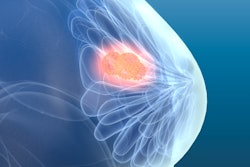Dear Women's Imaging Insider,
The benefits of digital breast tomosynthesis (DBT) are strongest for women undergoing their first DBT breast screening, according to the findings of a new study that included more than 1.5 million screening exams.
DBT had better initial cancer detection and recall rates than digital mammography, researchers found. But the increasingly popular technology fell short on subsequent screenings for certain women, including those with extremely dense breasts. Read more in this edition's Insider Exclusive.
In other Women's Imaging Community news, a new report found that the number of screening exams for breast cancer dropped by double digits this spring in response to the COVID-19 pandemic. Compared with last year, mammography exams declined by 44% in March and a whopping 89% in April. Researchers warn that an increase in late-stage cancer could be coming.
Speaking of breast imaging, doctors identified a case of COVID-19 when a woman underwent CT staging for breast cancer. Physicians noted COVID-19 pneumonia findings on a chest CT scan of the patient, a 59-year-old incarcerated woman who had no chest pain, fever, or trouble breathing. The case emphasizes the importance of proper protection and infection control -- even when imaging asymptomatic patients.
In other big news, researchers debuted a new breast cancer risk model that takes into account 93 unique biological, behavioral, social, and physical relationships. Overall, patient age was the strongest risk factor for breast cancer, followed by breast density, radiation exposure, and having high-risk genes.
Finally, you don't want to miss AuntMinnie.com's interview with Dr. László Tabár, a Swedish radiologist and oncologist who is also known as the "father" of mammography screening. In this data-driven piece, Tabár explains how Sweden implemented widespread breast screening and became a model for other nations to follow in the process.
It's definitely an interesting time to be thinking about the history of breast screening when so many mammography norms have been upended because of the pandemic. Let's hope steps to flatten the curve can increase routine breast screenings in the winter and fall, helping to return to a sense of normalcy and save lives.



















